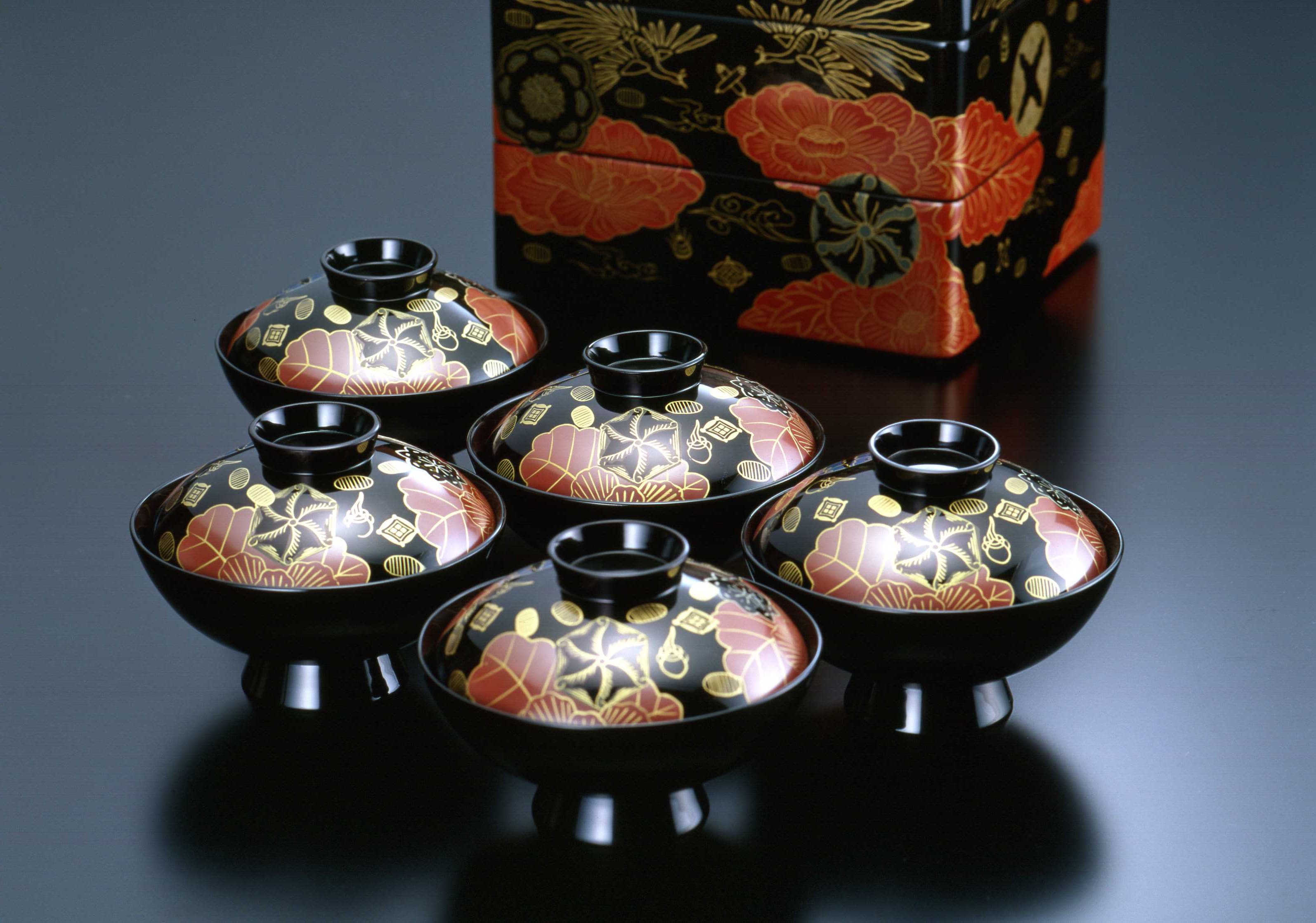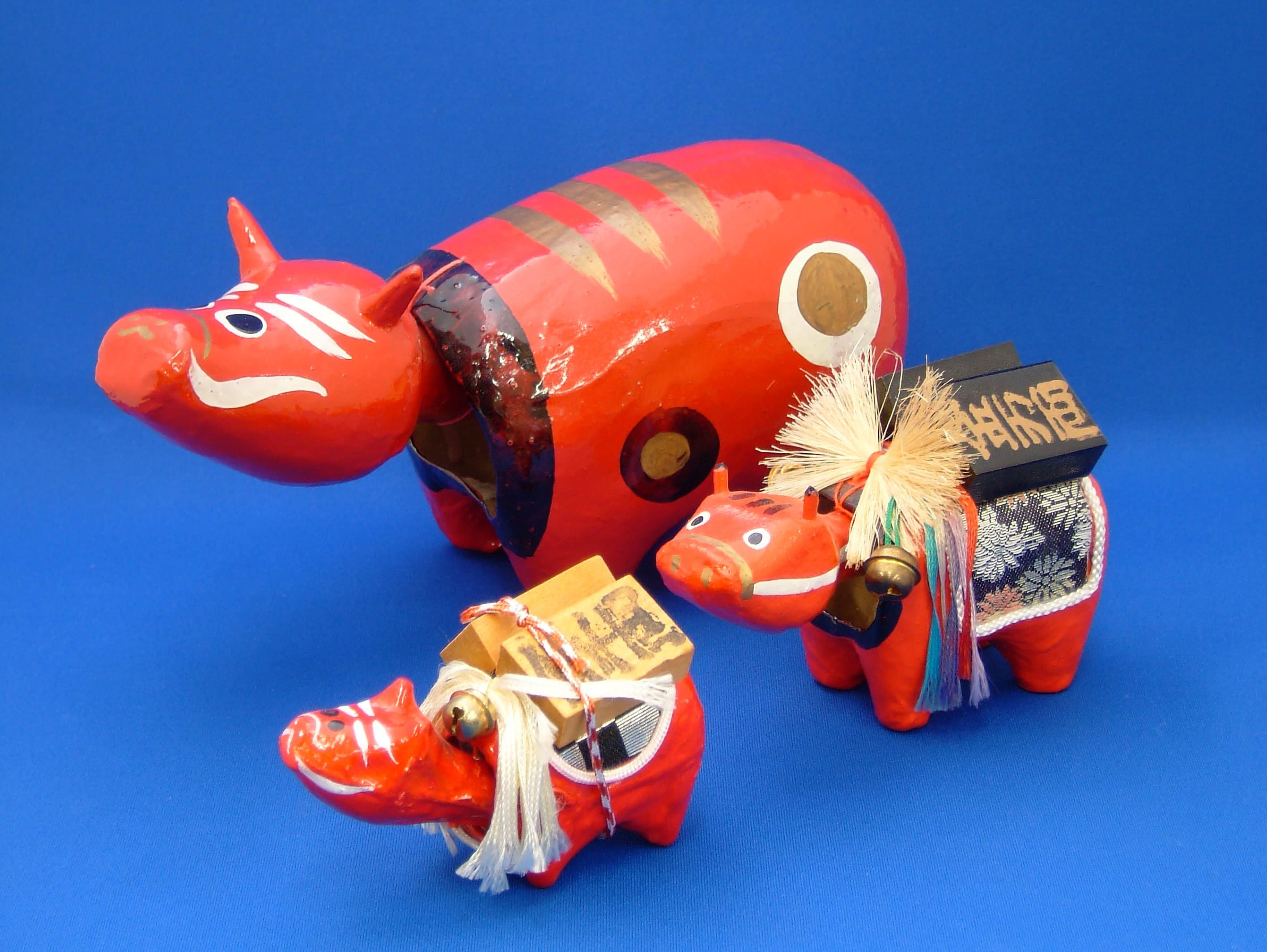Aizu Lacquerware

The Aizu region has been a leading producer of high-quality wooden lacquerware for more than 400 years, originating with the efforts of two leading figures. Ashina Morinobu (1408–1451) promoted the cultivation of urushi trees, from which lacquer is produced. Gamo Ujisato (1556–1595) further established the lacquerware industry when he invited skilled woodworkers to come to Aizu. Production of lacquerware flourished under the support of successive rulers, and Aizu’s artisans refined their woodworking and lacquer-coating techniques over time.
Aizu lacquerware was designated a traditional craft of Japan in 1975 and is known for designs that are unique to Aizu. It is typically made on wood bases that are broadly divided into round pieces, such as bowls, and flat ones, such as trays and boxes. However, in order to broaden the appeal of the craft, modern artisans may apply lacquer to fabric, metal, and glass to create a wide range of accessories. After layering the lacquer, they finish with intricate hand-drawn designs using colored lacquer along with gold or silver powder. Typical patterns include the auspicious motifs of pine, plum, and bamboo, as well as hamaya (ritual arrows that bring good luck). Visitors can try making lacquerware in hands-on workshops at various locations in Aizu-Wakamatsu.

his English-language text was created by the Japan Tourism Agency.
Related Places
-
- Traditional Craft—Akabeko Painting
-

Akabeko are small red figurines of cows or oxen. They were created as playthings and good-luck charms for children more than 400 years ago and are now a symbol of Aizu-Wakamatsu. Akabeko (lit., “re.....read more